Sharath TS
Neural MultiVoice Models for Expressing Novel Personalities in Dialog
Sep 05, 2018
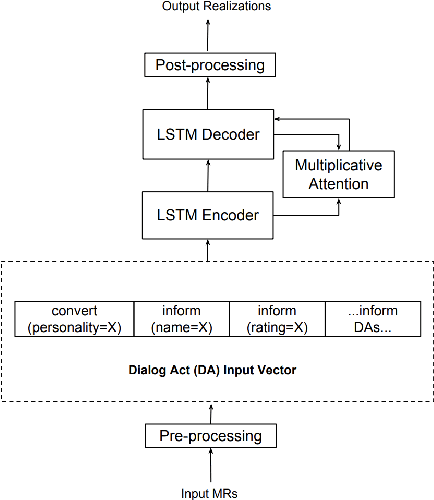

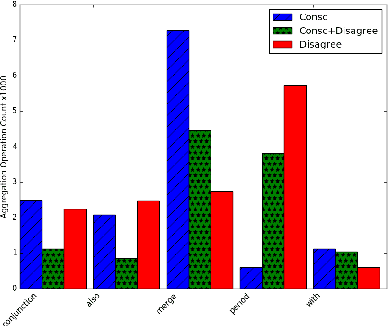
Abstract:Natural language generators for task-oriented dialog should be able to vary the style of the output utterance while still effectively realizing the system dialog actions and their associated semantics. While the use of neural generation for training the response generation component of conversational agents promises to simplify the process of producing high quality responses in new domains, to our knowledge, there has been very little investigation of neural generators for task-oriented dialog that can vary their response style, and we know of no experiments on models that can generate responses that are different in style from those seen during training, while still maintain- ing semantic fidelity to the input meaning representation. Here, we show that a model that is trained to achieve a single stylis- tic personality target can produce outputs that combine stylistic targets. We carefully evaluate the multivoice outputs for both semantic fidelity and for similarities to and differences from the linguistic features that characterize the original training style. We show that contrary to our predictions, the learned models do not always simply interpolate model parameters, but rather produce styles that are distinct, and novel from the personalities they were trained on.
Summarizing Dialogic Arguments from Social Media
Oct 31, 2017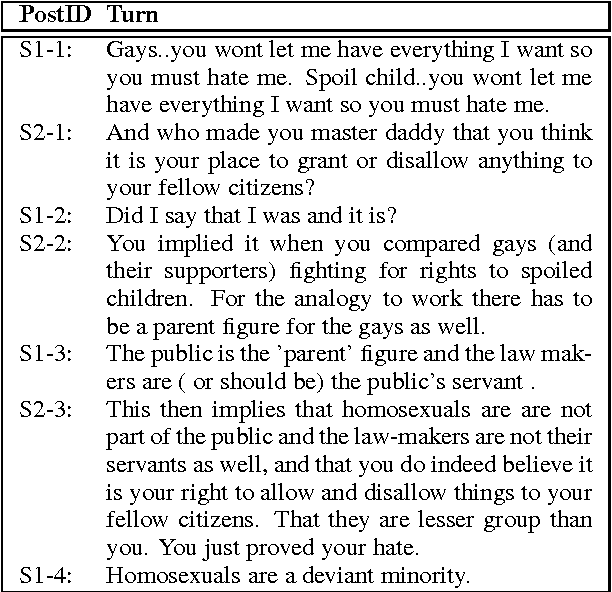
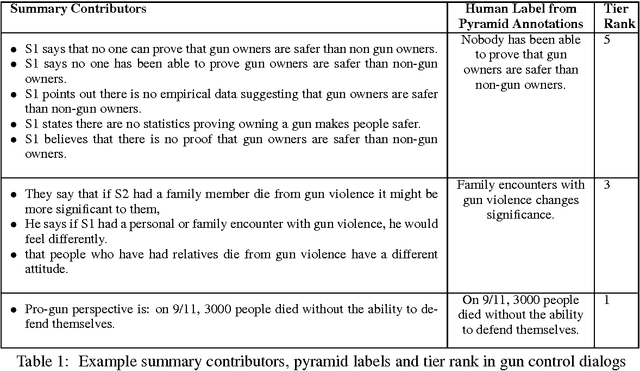
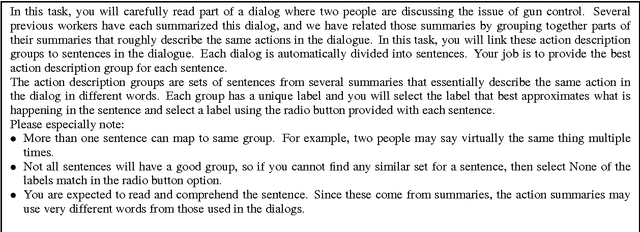
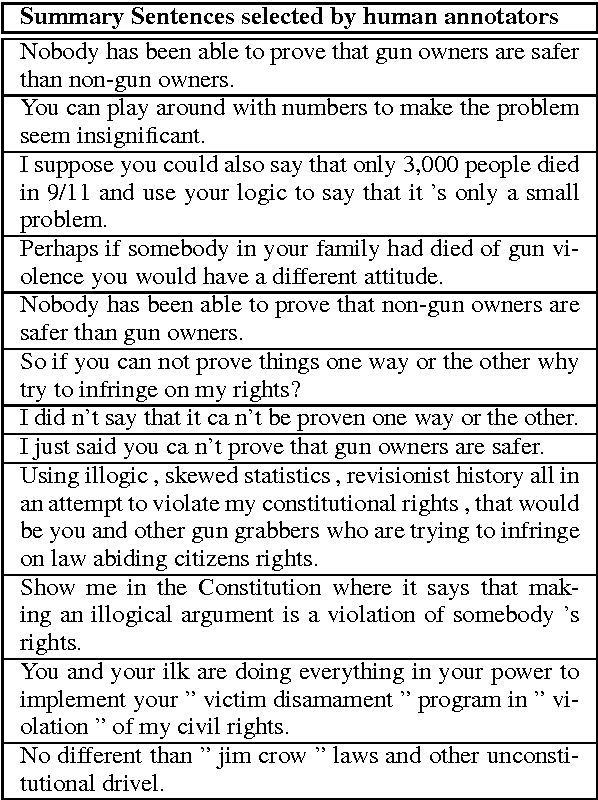
Abstract:Online argumentative dialog is a rich source of information on popular beliefs and opinions that could be useful to companies as well as governmental or public policy agencies. Compact, easy to read, summaries of these dialogues would thus be highly valuable. A priori, it is not even clear what form such a summary should take. Previous work on summarization has primarily focused on summarizing written texts, where the notion of an abstract of the text is well defined. We collect gold standard training data consisting of five human summaries for each of 161 dialogues on the topics of Gay Marriage, Gun Control and Abortion. We present several different computational models aimed at identifying segments of the dialogues whose content should be used for the summary, using linguistic features and Word2vec features with both SVMs and Bidirectional LSTMs. We show that we can identify the most important arguments by using the dialog context with a best F-measure of 0.74 for gun control, 0.71 for gay marriage, and 0.67 for abortion.
 Add to Chrome
Add to Chrome Add to Firefox
Add to Firefox Add to Edge
Add to Edge